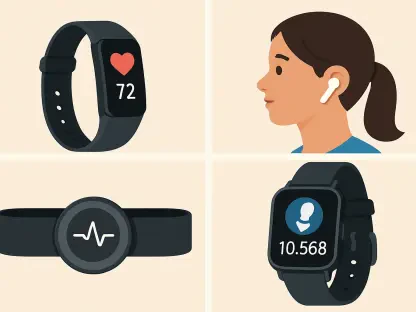Apple, a leader in innovation and design, confronts a recurring concern regarding the perceived durability of its devices. While widely recognized for excellence in design, privacy, and security, Apple products, especially iPhones, often receive mixed reviews on durability. This analysis explores the dichotomy between innovation and fragility and evaluates how this perception impacts Apple’s market dynamics.
Evaluation of Historical Influences and Market Dynamics
Apple’s journey in the smartphone market began with the introduction of the original iPhone, a groundbreaking product with a few durability issues. These early shortcomings continue to shape consumers’ perceptions, despite considerable advancements in technology and quality. The persistent view of fragility is rooted in these initial experiences, creating a long-lasting narrative that remains resistant to the company’s efforts to prove its durability credentials. Understanding these historical patterns is essential for assessing current market sentiment and the challenges Apple faces in reshaping public perceptions.
The second-hand smartphone market serves as a testament to the actual durability and longevity of Apple devices. iPhones consistently showcase high resale values, underpinned by robust software support and an extended lifespan compared to other brands. Contradicting beliefs about fragility, these factors highlight how Apple devices often surpass competitors in longevity. This aspect of the market sheds light on the broader issue of perception versus reality in Apple’s overall device evaluation.
Analysis of Current Trends and Consumer Preferences
Innovative design paired with initial perceptions of fragility defines a significant aspect of current consumer behavior toward Apple products. While subsequent models have improved durability attributes significantly, early impressions still linger in the consumer conscience. This deep-seated perception affects consumer choices and demands a nuanced understanding of the dynamics that contribute to these enduring beliefs.
Regional preferences further complicate the durability landscape, as different consumers prioritize varying aspects of smartphone quality. In Europe, for instance, consumers favor durability differently than their American counterparts, based on cultural and lifestyle distinctions. Additionally, highly publicized repair markets tend to capitalize on Apple’s prominence, further amplifying perceptions of weakness. Understanding regional distinctions helps to clarify the multifaceted nature of Apple’s market challenges.
Projections and Strategic Implications
Looking forward, Apple is poised to face new regulatory challenges, such as the European energy efficiency labeling, expected to further impact perceptions of its products. As industry standards shift and evolve, the company may encounter increased scrutiny regarding environmental sustainability and device longevity. These external pressures require strategic adjustments to reinforce the brand’s image as one of reliability and durability.
Experts in the industry suggest that Apple’s strategy should focus on leveraging its strengths, such as privacy and ecosystem integration, to counteract perceptions of fragility. Clear communication about improvements in durability and engaging consumer narratives more effectively will be critical to enhancing Apple’s market position. Providing transparent information can significantly aid in bridging the gap between perception and reality, ensuring consumer trust and brand loyalty.
Market Insights and Consumer Implications
This analysis highlights the need for Apple to engage in proactive measures to alter perceptions associated with the durability of its devices. The past impacts perceptions significantly, suggesting that historical biases rather than current performance drive much of consumer sentiment. Moving forward, grounding narratives in factual evidence will be vital for altering these perceptions effectively.
As Apple navigates these challenges, it should capitalize on its strengths, leveraging successes to counterbalance fragility myths. Potential strategies could include transparent consumer engagement and leveraging strong resale market performance as evidence of durability. Emphasizing accurate product assessments will be crucial in effectively shifting consumer narratives and perceptions over time.
In summary, while Apple excels in numerous attributes, effectively addressing durability perception challenges is essential in maintaining industry leadership and fostering informed consumer loyalty. The need for an objective, narrative-altering strategy remains imperative in the evolving landscape of global technology markets.









